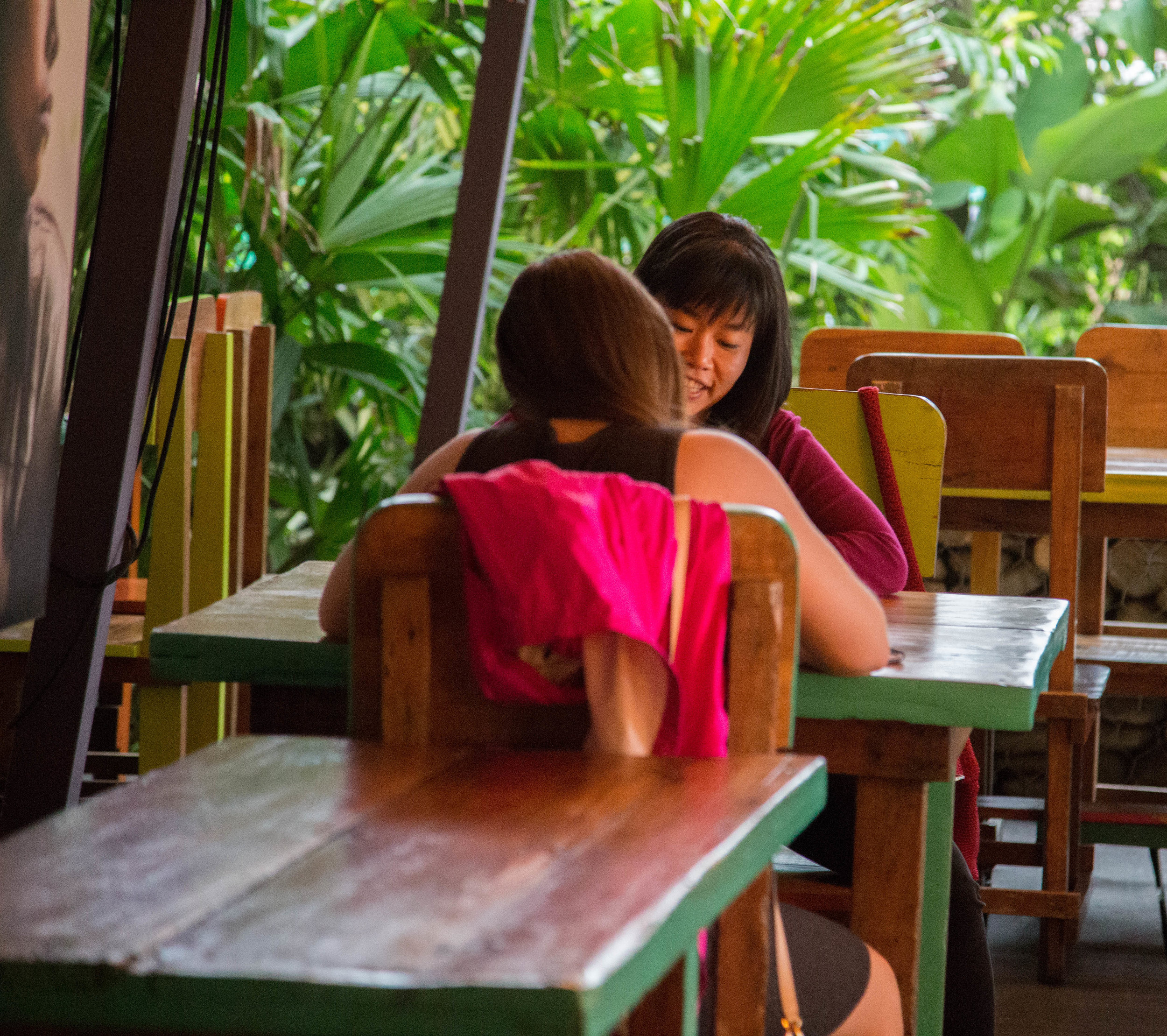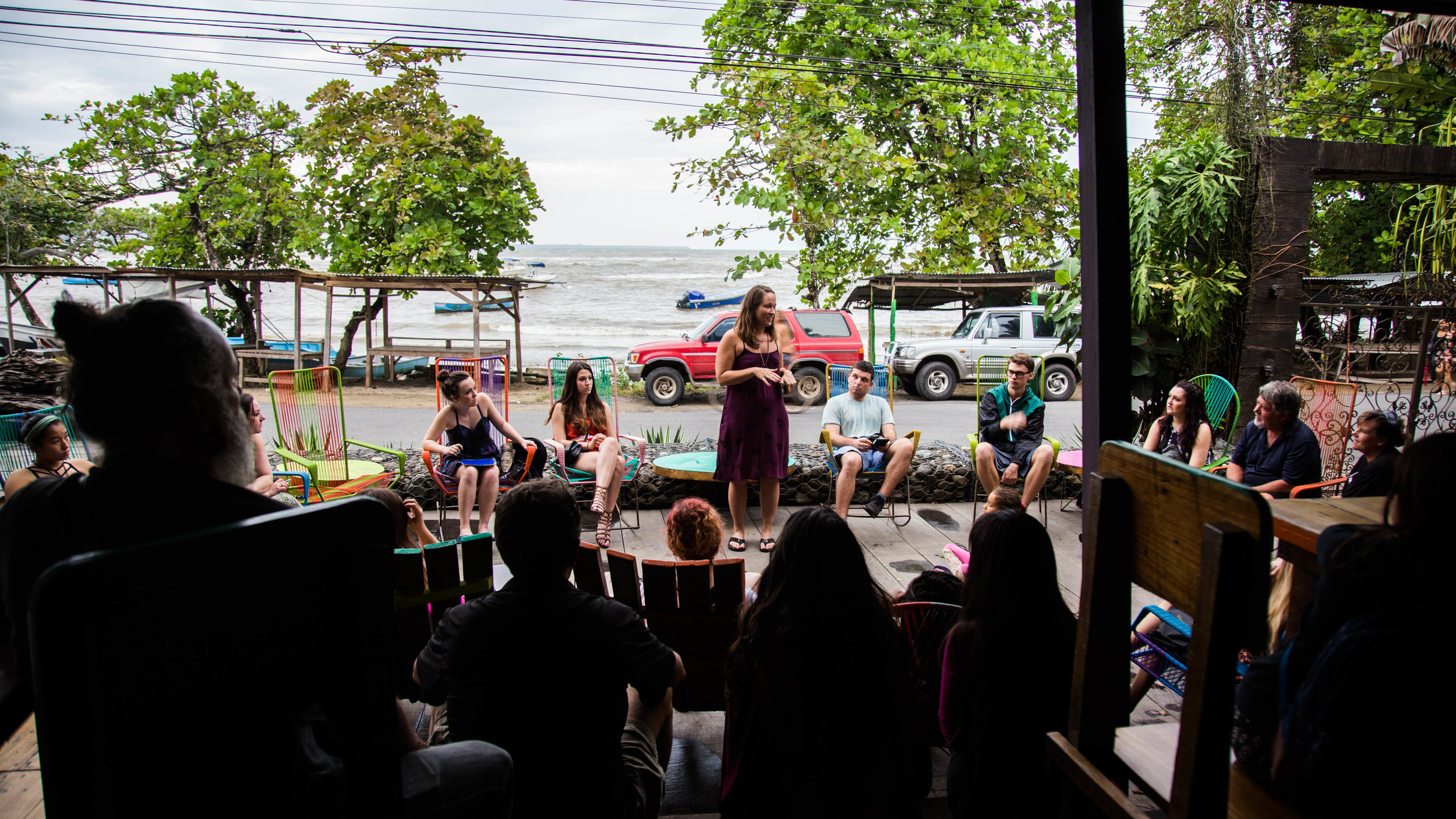Everyone has a story: Reflections on a Narrative 4 Story Exchange
By Tori Ziege. Photos by Teaira Charlton.
Everyone has a story.
That’s why I became a journalist. I’ve never felt represented by what is immediately tangible to those who meet me: my appearance, my interests, my polite speech. I feel the majority of my interactions (and all interactions) exist within this safe little bubble — trite and cursory. No one is harmed, but no one is fulfilled. We part feeling disconnected. We part without being known.
So I became a journalist. I wanted to see past first impressions. I wanted to bypass social niceties and engage others in meaningful conversation. I wanted to be known, and to know others.
Of course, I quickly found out that there’s a lot more to being a journalist. Throughout my four years at IU, I’ve had the opportunity to tell some truly profound and moving tales. I’ve also repeated stories that are frankly more of the same, contributing to the ongoing problem of social disconnect. Not untrue, necessarily. That wouldn’t be journalism. But it’s not the whole truth. That’s the reporter’s conundrum. Wielding our microphones, we have the power to open people up, but we also have the power, inadvertently, to make them shut down.
Enter Narrative 4, a nonprofit that seeks to“build a community of empathic global citizens who improve the world through the exchange of personal narratives.”
On Monday, Nov. 21, myself and fellow Media School students had the opportunity to take part in a Narrative 4 story exchange led by our host, Katie Beck. Each student was paired off with a local of Puerto Viejo, both of whom were asked to share a story about where they came from. Then, the pairs came back together into large groups, and, in the first person, told their partner’s story.





To me, this experience is the essence of journalism. It asks participants to hold space for one another without judgement and then charges them with the tremendous responsibility of telling someone else’s story fully and honestly. It reminded me of why I wanted to become a journalist in the first place.
My favorite moment came during small group, when IU senior Taylor Hurt and her partner, Mike, shared one another’s stories about racial identity. Listening to Mike, a middle-aged white man, give his “first person” account of the challenges Taylor experienced growing up as a young, black woman was truly moving. Taylor followed by telling her “first person” account of Mike’s upbringing in the Deep South, where he grew up with segregated drinking fountains, bathrooms, even restaurants.
This is what journalism is all about: bridging race, class, age and ethnicity to tell true stories, connecting people across borders and most importantly—across the bubbles that limit our everyday conversation.
It’s what the world needs — now more than ever. To listen without judgement to those who are different than us, about the issues that matter to them, and do our best to communicate those sentiments with compassion and sincerity.
After my experience with Narrative 4, I will continue to do my best to inspire those conversations — regardless of whether my recorder is rolling or not.
